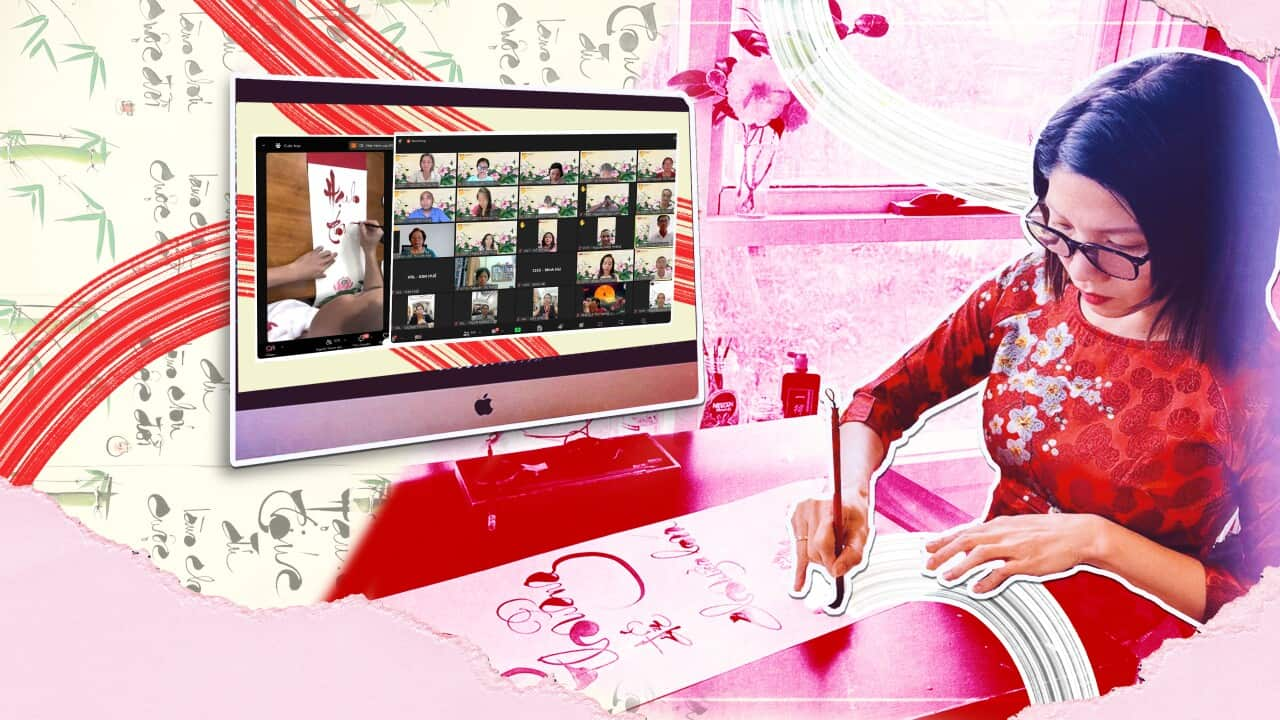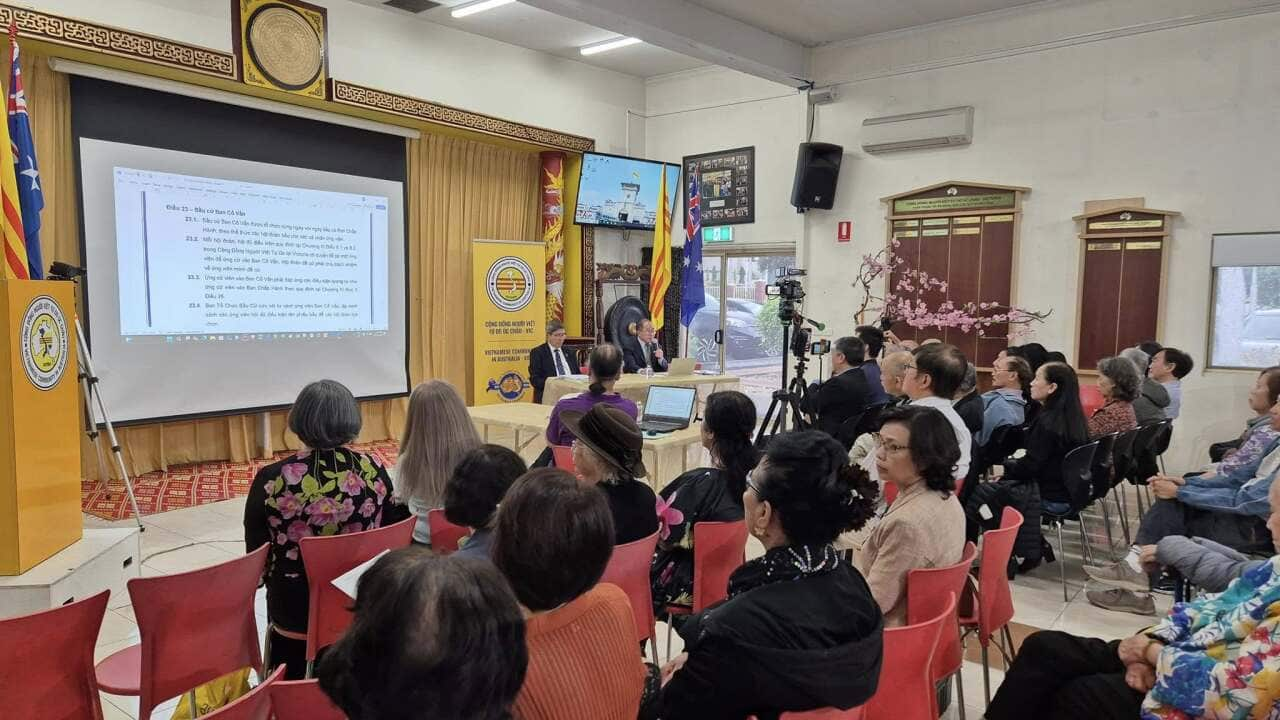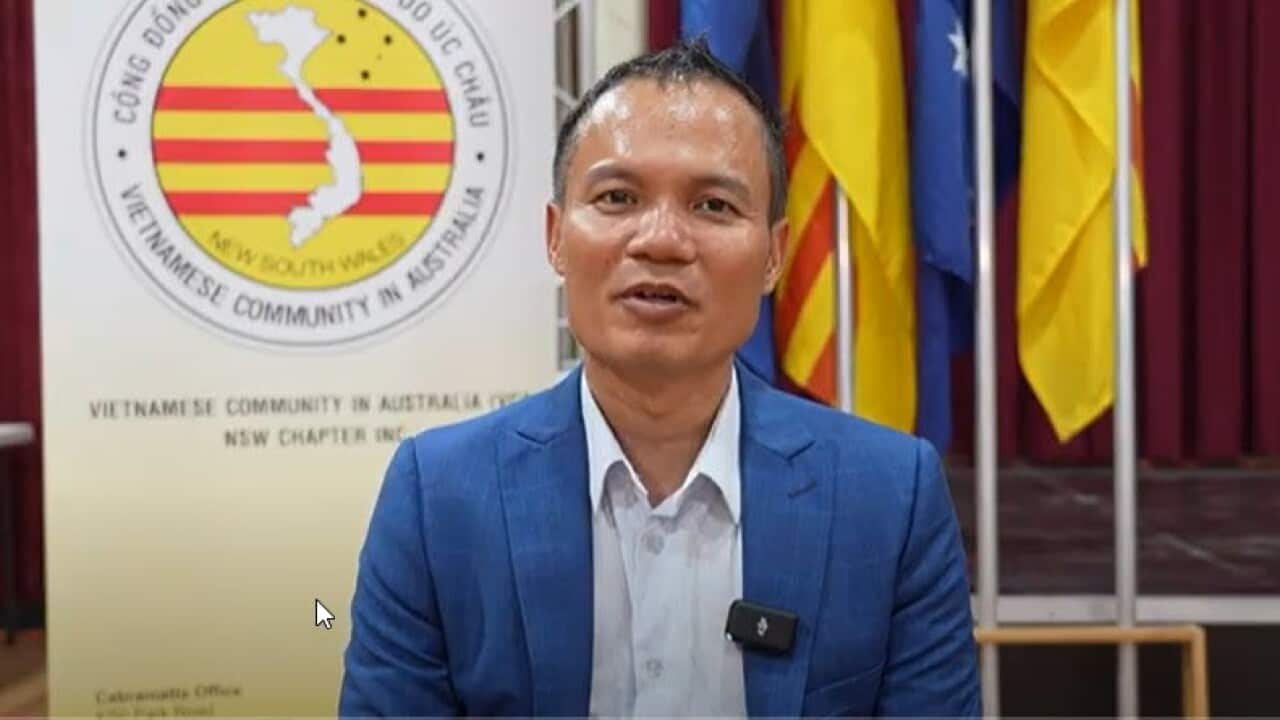Key Points
- Tracey Tuyet Cu runs online calligraphy classes from her home in Melbourne.
- She has so far introduced nearly 100 students to the art form which she says helps create peace of mind.
- Student Linh Le says the practice helped her to be more patient and unwind after a long day at work.
As a child, Tracey Tuyet Cu was attracted to calligraphy but didn't think she would ever have the opportunity to learn its techniques.
But this changed when the former restaurant owner joined a cultural entrepreneurship course through the Wisdom Three (WiT) community, which included calligraphy and watercolour painting.
It put her on the path to cultural connection.
"I believe a successful entrepreneur is not only one who can attract finances but also demonstrates competence in other areas such as art, music, martial arts, and sport," she said.
"These have the ability to help open the mind."
She now runs online calligraphy classes from her Melbourne home and has introduced nearly 100 Australia-based individuals to the art form.
Her students are from both Vietnamese and non-Vietnamese backgrounds, she explained.
Vietnamese calligraphy or 'Thư pháp' is a traditional art influenced by Chinese calligraphy that has evolved to incorporate both Hán Nôm, which are classical Sino-Vietnamese characters, and the Latin alphabet used in modern Vietnamese script.
This form of expression often involves conveying spiritual and philosophical messages through the style and balance of each stroke.
The art form likely began during the Lý (1009–1225) and Trần (1225–1400) dynasties when Confucianism, along with the Chinese writing system, was firmly established in Vietnam.

Students in one of WiT's online calligraphy classes. Credit: Supplied
"Calligraphy expresses beauty and art in a profound way; it helps to connect and inspire generations especially helping to build international cultural bridges because calligraphy is an art that can overcome language and cultural barriers.
"It is more than just an art form; it is a spiritual practice reflecting the emotions, wisdom, and inner peace of the calligrapher. It is often used to transcribe moral teachings and valuable advice from our ancestors, which not only helps the writer find balance in life and think deeply but also guides individuals to live with roots and adhere to beautiful principles."

Samples of Tuyet Cu's calligraphy. Credit: Supplied
"Imagine calligraphers in traditional áo dài (Vietnamese national dress), writing characters while people from different communities watch in admiration. It would create a beautiful scene of cultural unity," she said.
Her approach encouraged students to embrace not just the technical skills but also the calming, reflective aspects of the art through writing meaningful phrases, proverbs and quotes that convey moral lessons, philosophical insights, or expressions of love and respect in both English and Vietnamese.
'Calligraphy taught me to be patient'
Melbourne-based life coach Linh Le said WiT's calligraphy class helped her to "unwind and reconnect" with her inner peace after a long day.
"After joining the WiT community and learning more, I began to appreciate its benefits. Though I wasn’t sure I could master calligraphy, I was intrigued and eager to give it my best," Le said.

Melbourne-based Linh Le says the calligraphy classes have taught her to slow down and be more patient. Credit: Supplied
"The biggest lesson I learned was how impatient I can be," she said.
"Calligraphy taught me to be patient. I also learned to regulate my breathing, which not only helped me control the brush but also made the process calming. I experienced what it means to ‘slow down,’ and it felt rejuvenating.
"When you experience something wonderful, you want to share it — like posting a photo of an amazing meal on social media. That’s how I felt about sharing Vietnamese calligraphy with my loved ones."
Record achieved
Tuyet Cu added another feather to her bow in 2024 when she was part of a successful record attempt in which 1,000 participants from 21 countries learned calligraphy in seven days.
The feat was recognised by as part of WorldKings, a global union of record-keeping organisations founded in 2013 to showcase achievements that benefit society and promote cultural heritage.
Her students, who are provided with a simple instruction manual, first master letters and then write words such as 'love' and 'happiness' in both English and Vietnamese.
"If we study seriously two days a week and spend 30 minutes a day practising, we will get results very quickly."













